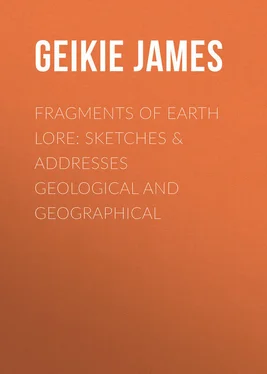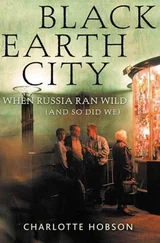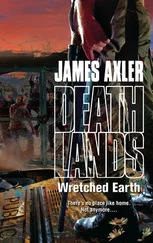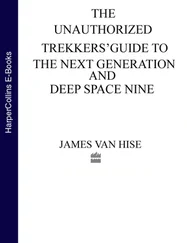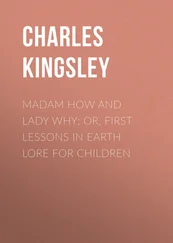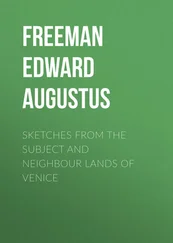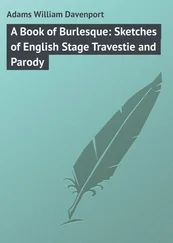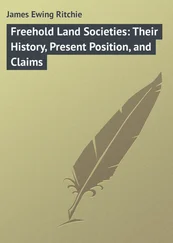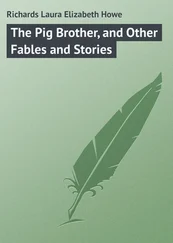James Geikie - Fragments of Earth Lore - Sketches & Addresses Geological and Geographical
Здесь есть возможность читать онлайн «James Geikie - Fragments of Earth Lore - Sketches & Addresses Geological and Geographical» — ознакомительный отрывок электронной книги совершенно бесплатно, а после прочтения отрывка купить полную версию. В некоторых случаях можно слушать аудио, скачать через торрент в формате fb2 и присутствует краткое содержание. Жанр: foreign_antique, foreign_prose, на английском языке. Описание произведения, (предисловие) а так же отзывы посетителей доступны на портале библиотеки ЛибКат.
- Название:Fragments of Earth Lore: Sketches & Addresses Geological and Geographical
- Автор:
- Жанр:
- Год:неизвестен
- ISBN:нет данных
- Рейтинг книги:4 / 5. Голосов: 1
-
Избранное:Добавить в избранное
- Отзывы:
-
Ваша оценка:
- 80
- 1
- 2
- 3
- 4
- 5
Fragments of Earth Lore: Sketches & Addresses Geological and Geographical: краткое содержание, описание и аннотация
Предлагаем к чтению аннотацию, описание, краткое содержание или предисловие (зависит от того, что написал сам автор книги «Fragments of Earth Lore: Sketches & Addresses Geological and Geographical»). Если вы не нашли необходимую информацию о книге — напишите в комментариях, мы постараемся отыскать её.
Fragments of Earth Lore: Sketches & Addresses Geological and Geographical — читать онлайн ознакомительный отрывок
Ниже представлен текст книги, разбитый по страницам. Система сохранения места последней прочитанной страницы, позволяет с удобством читать онлайн бесплатно книгу «Fragments of Earth Lore: Sketches & Addresses Geological and Geographical», без необходимости каждый раз заново искать на чём Вы остановились. Поставьте закладку, и сможете в любой момент перейти на страницу, на которой закончили чтение.
Интервал:
Закладка:
James Geikie
Fragments of Earth Lore: Sketches & Addresses Geological and Geographical
PREFACE
The articles in this volume deal chiefly with the history of Glacial times and the origin of surface-features. As they were not written with any view to their subsequent appearance in a collected form, each is so far independent and complete in itself. Under these circumstances some repetition was unavoidable, if the articles were not to be recast, and I did not think it advisable to make such radical alteration. With the exception of verbal changes and some excisions, therefore, the papers remain substantially in their original state. Here and there a footnote has been added to indicate where the views expressed in the text have since been modified; but I have not been careful to insert such notes throughout. Geologists, like other folk, live and learn, and the reader will probably discover that the opinions set forth in some of the later articles are occasionally in advance of those maintained in the writer’s earlier days.
I have to thank the Publishers of Good Words for allowing me to republish the articles on the Cheviot Hills and the Outer Hebrides. My acknowledgments are also due to Mr. Bartholomew for the excellent maps with which the volume is so well illustrated.
Edinburgh, April 5th, 1893 .
I.
Geography and Geology. 1 1 Portion of a lecture given in 1886 to the Class of Geology in the University of Edinburgh.
The teaching of Geography naturally occupies a prominent place in every school curriculum. It is rightly considered essential that we should from an early age begin to know something of our own and other countries. I am not sure, however, that Geography is always taught in the most interesting and effective manner. Indeed, according to some geographers, who are well qualified to express an opinion, the manner in which their subject is presented in many of our schools leaves much to be desired. But a decided advance has been made in recent years, and with the multiplication of excellent text-books, maps, and other appliances, I have no doubt that this improvement will continue. When I attended school the text-books used by my teachers were about as repellent as they could be. Our most important lesson was to commit to memory a multitude of place-names, and the maps which were supposed to illustrate the text-books were, if possible, less interesting and instructive. Nowadays, however, teachers have a number of more or less excellent manuals at their service, and the educational maps issued by our cartographers show in many cases a very great advance on the bald and misleading caricatures which did duty in my young days as pictures of the earth’s surface.
During the progress of some war we often remark that the task of following the military operations compels us to brush up our Geography. I am uncharitable enough to suspect that it would frequently be truer to say that, before these campaigns commenced, we had no such knowledge to brush up. The countries involved in the commotion were probably mere names to many of us. We had no immediate interest in them or their inhabitants, and had we been asked, before the outbreak of hostilities, to indicate the precise positions of the places upon a map, some of us perhaps might have been sorely puzzled to do so. Nor is such ignorance always discreditable. One cannot know everything; the land-surface of the globe contains upwards of 50 millions of square miles, and one may surely be excused for not having a detailed knowledge of this vast area. I have referred to the subject simply because I think it gives us a hint as to how the teaching of Political Geography might be made most instructive and interesting. Historical narrative might often be interwoven with the subject in such a way as to fix geographical features indelibly on the memory. Striking and picturesque incidents, eventful wars, the rise and progress of particular trades, the routes followed by commerce, the immigration and emigration of races, the gradual development of the existing political divisions of the Old World, the story of Columbus and the early voyagers, the geographical discoveries of later times – all these, and such as these, might be introduced into our lessons in Political Geography. The wanderings of a Mungo Park, a Bruce, a Livingstone, a Stanley, traced on a good map, could not fail to arrest the attention of the youthful student of African geography. In like manner, the campaigns of the great Napoleon might be made to do good service in illustrating the geographical features of large portions of our own continent. Then, as regards Britain, what a world of poetry and romantic story clings to every portion of its surface – why, the very place-names themselves might suggest to any intelligent teacher themes and incidents, the deft treatment of which would make the acquisition of Geography a delightful task to the dullest boy or girl.
The intimate relation that obtains between Political Geography and History has indeed long been recognised, and is in fact self-evident. And we are all well aware that in our school manuals of Geography it has been usual for very many years to note the scenes of remarkable events. Such notes, however, are of necessity extremely brief; and it need hardly be said that to fully incorporate history in a text-book of general Geography would be quite impracticable. It might be done to a certain extent for our own and a few of the more important countries; but similar detail need not be attempted in regard to regions which are of less consequence from the political point of view. Indeed, I should be inclined to leave the proper application of historical knowledge in the teaching of Geography very much to the teacher himself, who would naturally select such themes and incidents as seemed best adapted to attract the attention of his pupils. Be that, however, as it may, it is enough for my present purpose if I insist upon the fact that the proper study of Political Geography involves the acquisition of some historical knowledge. One can hardly conceive the possibility of an intelligent student taking pains to become acquainted with the political geography of a country without at the same time endeavouring to learn something of its history – otherwise, his geographical attainments would hardly surpass those of a commercial traveller, whose geographical studies have been confined to the maps and tables of his Bradshaw.
But if it be impossible to ignore History in the teaching of Political Geography, it is just as impossible to exclude from our attention great physical features and characteristics. Surface-configuration, climate, and natural products all claim our attention. It is obvious, in fact, that the proper study of Political Geography must give us at least a general notion of the configuration, the river-systems, and climatic conditions of many different lands. For has not the political development of races depended most largely on the physical conditions and natural resources of the countries occupied by them? So far, then, as these have sensibly influenced the progress of peoples, they come naturally under the consideration of Political Geography. Thus, if Political Geography be closely connected and interwoven, as it were, with History, not less intimate are its relations to Physical Geography. It does not embrace all Physical Geography, but it introduces us to many facts and phenomena, the causes and mutual relations of which we cannot understand without first mastering the teachings of Physical Geography. In the study of this latter science we come more closely into contact with Nature; we cease to think of the surface of the earth as parcelled out into so many lots by its human occupants – we no longer contemplate that surface from the limited point of view of the political geographer – we are now not merely members of one particular community, but have become true citizens of the world. To us north and south, east and west are of equal interest and importance. Our desire now is to understand, if haply we may, the complex system of which we ourselves form a part. The distribution of land and water – the configuration of continental areas and oceanic basins – the circulation of oceanic and terrestrial waters – earth-movements and volcanoes – ice-formations – the atmosphere – climatology – the geographical distribution of plants and animals – in a word,
Читать дальшеИнтервал:
Закладка:
Похожие книги на «Fragments of Earth Lore: Sketches & Addresses Geological and Geographical»
Представляем Вашему вниманию похожие книги на «Fragments of Earth Lore: Sketches & Addresses Geological and Geographical» списком для выбора. Мы отобрали схожую по названию и смыслу литературу в надежде предоставить читателям больше вариантов отыскать новые, интересные, ещё непрочитанные произведения.
Обсуждение, отзывы о книге «Fragments of Earth Lore: Sketches & Addresses Geological and Geographical» и просто собственные мнения читателей. Оставьте ваши комментарии, напишите, что Вы думаете о произведении, его смысле или главных героях. Укажите что конкретно понравилось, а что нет, и почему Вы так считаете.
